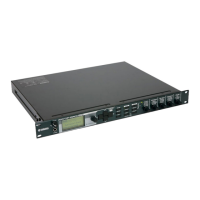
Do you have a question about the Yamaha Motif-Rack XS and is the answer not in the manual?
| Equalizer | Yes |
|---|---|
| Product type | Digital synthesizer |
| Product color | Black |
| Sound effects | Chorus, Reverberation |
| Chorus effects quantity | 22 |
| Keyboard number of keys | - |
| Maximum polyphony (notes) | 128 |
| Reverberation effects quantity | 9 |
| Display type | LCD |
| Headphone outputs | 1 |
| Power source type | DC |
| Depth | 379.4 mm |
|---|---|
| Width | 480 mm |
| Height | 44 mm |
| Weight | 4200 g |
Modifications not expressly approved by Yamaha may void FCC authorization.
Instructions for connecting the mains lead and plug for UK power outlets.
Statement of compliance with FCC Rules Part 15 for Class "B" digital devices.
Basic precautions to avoid serious injury or death from electrical shock, fire, or hazards.
Precautions to avoid physical injury or damage to the instrument or property.
Procedures for saving DRAM data to Flash ROM or external devices.
Recommendation to save important data onto two external media for protection.
1U rack-mounted tone generator with authentic Yamaha MOTIF XS synthesizer sounds.
Arpeggio automatically plays sequenced phrases, responding to keys and chords.
Knobs for real-time adjustment of parameter values, including effect settings.
Function to reconfigure the MOTIF-RACK XS for computer/sequencer applications.
Comprehensive editing software for Voices, Multis, and Quick Setup parameters.
Designed for seamless integration with Cubase DAW software.
Description of the MOTIF-RACK XS front panel controls and their functions.
Procedure for connecting the AC power adapter and precautions.
Guidance on connecting headphones or powered speakers for monitoring.
Step-by-step instructions for turning the MOTIF-RACK XS power on and off.
How to play back the MOTIF-RACK XS's demo songs.
Overview of connecting to computers and MIDI devices via USB or IEEE1394.
Instructions for connecting the MOTIF-RACK XS to a computer via USB.
Important safety points to avoid freezing or data loss when using USB TO HOST.
Features and benefits of connecting via IEEE1394 for multi-channel audio.
Ensuring MIDI transmit and receive channels match for proper sound generation.
Setting up MIDI sync for external sequencers and DAW software.
Using Multi mode as a MIDI tone generator with DAW sequence data.
Combining MOTIF-RACK XS with another synth for up to 32 Parts play.
Detailed editing of parameters via the MOTIF-RACK XS Editor software.
Features like automatic IEEE1394 setup and multi-channel recording templates.
Software/hardware solution for seamless hardware synthesizer integration.
Overview of operational conventions and selection of modes like Voice and Multi.
Playing a Voice, editing Common/Element/Key parameters, and storing.
Setting up for multi-timbral use, editing Common/Part parameters, and storing.
Selecting and playing single Voices in the Voice Play display.
Detailed explanation of parameters controlled by Knobs 1-5 in different modes.
Setting effect parameters to further change the character of a Voice sound.
Determines vibrato, tremolo, and wah effects using LFO.
Continues explanation of different filter types.
Adjusting parameters like effect depth, attack/release, and tonal color.
Setting Voice output level, pan, note shift, and other playback parameters.
Process of creating a Voice by changing its parameters.
Editing individual Element parameters like Oscillator, Pitch, Filter, Amplitude, EG.
Setting AEG transition time and Level parameters for Amplitude EG.
Editing common parameters for Drum Voices.
Editing individual Key parameters like OSC, Assign Mode, and Effect settings.
Assigning MIDI Control Change Numbers to knobs and external controllers.
Modulates sound using LFO waveform, Speed, and Key on Reset.
Determines the Filter Type for the current Element.
Selecting and playing Multis, and playback of DAW song files with MOTIF-RACK XS sounds.
Editing Common Edit and Part Edit parameters for Multis.
Detailed steps for editing effect parameters like Chorus Send and Reverb Send.
Editing Common Edit and Part Edit parameters for Multis.
Continues explanation of Master EQ parameters.
Setting Effect parameters like Chorus To Reverb, Chorus Return, Reverb Return.
Editing parameters of individual Parts that make up a Multi.
Assigning functions to external controllers and knobs for each Voice.
Procedure for storing edited settings to internal memory.
Archiving or backing up data using the Bulk Dump function.
Procedure to restore the instrument's user memory to factory default settings.
Overview of the five main functional blocks: Tone Generator, Audio Input, Arpeggio, Controller, Effect.
Receiving MIDI data over a single channel for "single timbre" tone generation.
Multi-timbral tone generation using MIDI channels for each Part.
Describes three main playback types for Arpeggio: played notes, programmed sequence.
How System Effects, Insertion Effects, and Master Effects are applied to the sound.
Explains effect routing in Voice mode and Multi mode.
Continues the list of parameters that make up effect types.
Editing common parameters for Normal Voices.
Setting overall instrument volume, note shift, and tune.
Executes preset parameter settings for basic operations.
Setting MIDI parameters for Voice mode.
Sets MIDI In/Out terminals, MIDI Sync, and Clock Out.
Dialog to execute Quick Setup by selecting a Setup Number.
Setting Master Effect parameters in Voice mode.
Assigns MIDI Control Change Numbers to knobs and external controllers.
Setting Master EQ parameters in Voice mode.
Restoring User memory to factory default settings.
Description of messages that may appear on the display.
Controls various functions like master volume, tuning, mode, and effect type.
Safety and handling precautions before installing the optional hardware.
Further troubleshooting steps for no sound issues.
Troubleshooting for inability to call up Play display or dialogs.
Troubleshooting steps for distorted sound output.
Troubleshooting data communication issues with computers.
Troubleshooting steps for very quiet or low volume output.
Troubleshooting data communication issues with MIDI instruments.
Troubleshooting for issues with Arpeggio playback not stopping.
Troubleshooting sound issues when playing back song data.
Troubleshooting steps for pitch-related issues.
Troubleshooting steps for issues with receiving bulk data.
Troubleshooting steps for choppy or intermittent sound.
Troubleshooting steps when only single notes are heard instead of chords.
Troubleshooting steps when effects are not applied.